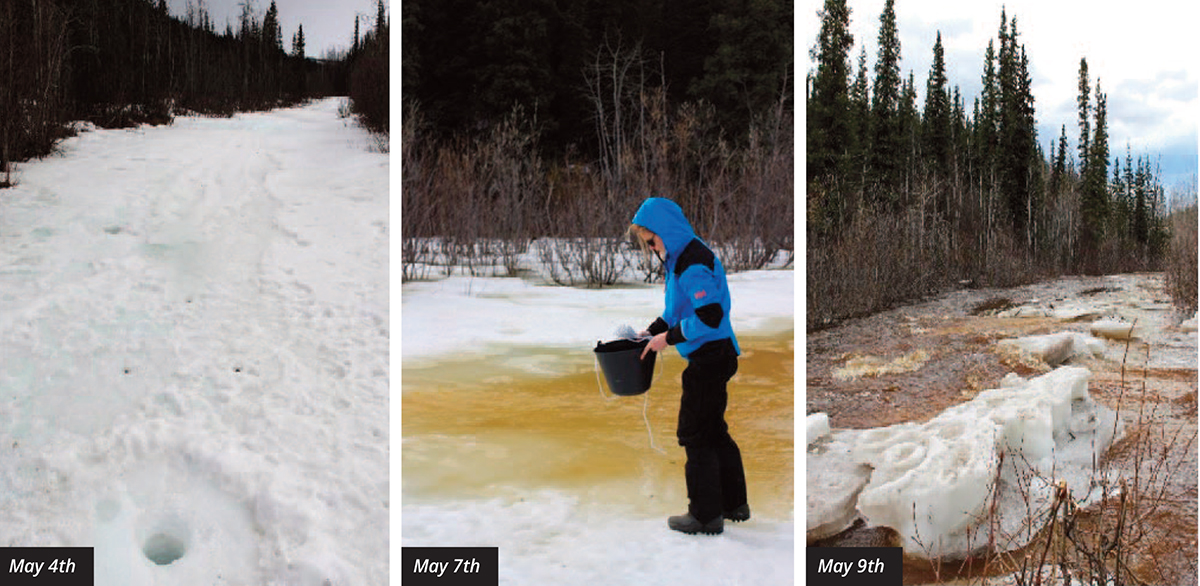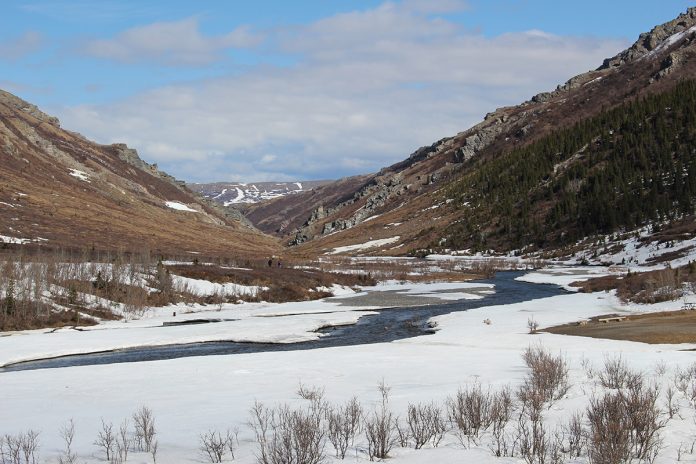Spring flood and rain events are pivotal periods to capture mineral element-organic carbon stabilisation in permafrost soils, highlights Catherine Hirst, Earth and Life Institute, UCLouvain, Belgium in this Arctic rivers focus
When it comes to the theme of permafrost thaw and the carbon feedback, climate change is indeed at full force in the Arctic. The highest Arctic temperature on record was reported in 2020. These rising temperatures have knock-on effects on Arctic rivers and the permafrost soils that they drain.
Impact on Arctic rivers
Arctic rivers, including the six large Arctic rivers (Ob’, Yenisey, Lena, Mackenzie, Yukon, Kolyma) and their tributaries, are the arteries connecting the permafrost landscape to the Arctic Ocean. Their combined river discharge, calculated by the volume of water in the river and the speed at which the river is travelling, is more than 10% of the world’s river discharge. This makes Arctic rivers the largest supplier of waters to the Arctic Ocean. These rivers have a dynamic seasonal cycle: during the winter months, rivers are covered in ice and often frozen to their base; during a tumultuous period in spring, the river ice breaks up and rivers are fed by snowmelt; and during the summer months waters flow into the river along the surface of unfrozen permafrost soils. Rising temperatures in the Arctic are driving increased precipitation that in turn drives increased river water discharge which can change the amount of material that is transported from permafrost soils to the Arctic Ocean.
Impact on permafrost soils
Permafrost, the ground that remains at or below 0ºC for more than two consecutive years, is storing a vast stock of organic carbon. During spring and summer months, the upper surface of these soils, termed the active layer, is unfrozen and organic carbon is unlocked. Rising temperatures in the Arctic are warming the permafrost surface, increasing the thickness of the active layer during summer months and exposing a larger stock of organic carbon. This leads to an amplified release of organic carbon from permafrost soils, with a portion of organic carbon released vertically to the atmosphere as carbon dioxide and methane; and a portion of organic carbon transported laterally from the soil to Arctic rivers.

The role of mineral elements
Mineral elements, such as iron (Fe) and aluminium (Al) play a key role in stabilising organic carbon in soil waters and controlling the lateral transport of organic carbon from soils to rivers. In soils, mineral elements bind to organic carbon to form nano to micron-scale entities, termed colloids. When rain and snow percolate through the soil’s thin unfrozen skin, they capture these mineral element bound-organic carbon colloids and transport them laterally into rivers. In this way, mineral elements stabilise organic carbon in soil and river waters.
But how is ongoing permafrost degradation affecting mineral element-organic carbon interactions? As part of the WeThaw project, Catherine Hirst seeks to answer this question by using river waters as a gauge of colloid formation in soil pore waters. She considers two pivotal moments in the Arctic river annual cycle that will capture the effect of permafrost degradation on the mineral element-organic carbon colloids: the spring flood and rain events. During these periods, the pathway for colloid transport from soils to rivers in unobstructed and the mineral element-organic carbon colloids carry a fingerprint of the processes occurring in permafrost soils.
Colloids as ‘fluvial seismometers’
The WeThaw team has sampled river and soil waters during peak flow events. In 2018 and 2019, the team ventured to Alaska to collect permafrost and river water samples during river ice break-up and a rain event. The team has established that during these peak events, mineral element-organic carbon colloids can act as a ‘fluvial seismometer’ to monitor the effect of permafrost degradation on organic carbon stabilisation in permafrost soils. Future work should target these crucial and understudied periods where the rapid changes, depicted in the photos below, allow for a direct connection between rivers and permafrost soils.
Webpage of the WeThaw project.
The WeThaw project is an ERC Starting grant funded under the European Union’s Horizon 2020 research and innovation programme (WeThaw, grant agreement 714617).











